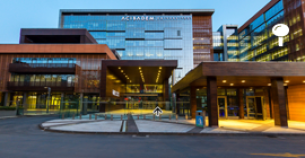Prof. Dr. Ata Akın
I conduct my researches within three categories:
1) Brain Researches (Measuring healthy and unhealthy brain physiology with functional neuroimaging methods, determining physiological factors beneath decision making and being able to reveal them via fNIRS technology)
2) Muscle Researches (Measuring changes, which the muscle metabolism undergo, in health, sickness and during exercise, with fNIRS and quantizing)
3) Mathematical Modelling (Modelling brain, muscle and cancer tissues’ physiologies in health and sickness, by using system biology tools) I use interdisciplinary approach in my researches and integrate disciplines, such as mathematics, electronics, neuroscience and neuropsychology.
Prof. Dr. Özge Can
Among my current research areas, there is detection of proteomic changes and genuine clinical bioindicators which identify different biological behaviours in brain glial cancer. As for the designation of these indicators, we use wide variety of molecular, biological and proteomic techniques, in order to distinguish glioma and its subgroups from control tissues and also from each other. Our goal is practical diagnosis of glioma and its subgroups in molecular level and obtaining useful information for its treatment and prognosis. I conduct my work as a member of Acibadem University Brain Tumor Research Group. Another current field of my study is monoclonal antibodies which have especially been in use lately for the treatment of quite complex diseases’, such as cancer and autoimmune diseases. One of the most important steps of biosimilar antibody development is biological and physicochemical characterization of antibody molecule. In these studies, which we conduct with Turgut Pharmeceutical Biotechnology Group by utilizing today’s most advanced and enhanced Technologies, we gather rather significant information about therapeutic monoclonal antibodies, such as antibody molecule’s binding characteristics to antigen, intact mass, peptide sequence, glocalization profile, quantification by detection of other posttranslational modifications like oxidation, deamidation and glycation, as well as disulfide bond localization.
Dr. Hande Argunsah Bayram, Academicia
My research areas are as follows:
Movement Analysis:
Movement analysis of healthy and amputated individuals, energy flow in lower extremities, development of hybrid prothesis devices, effects of biological feedback to exercise, movement analysis in children who suffered traumatic brain injury, comparison and analysis of plaster cast with BTX-A method as opposed to solely plaster cast method in movements of children with cerebral palsy.
Robotic Rehabilitation and Wearable Rehabilitation Devices:
Development and testing of hybrid prothesis devices that would enable energy flow in lower extremities, such as low cost and engine‒driven prothesis devices, comparison of wearable external skeleton robots as opposed to conventional physical therapy.
Development of Robotic Rehabilitation Devices:
Development and testing of devices which would enable patient’s rehabilitation course at home while connecting with physical therapy specialist or the doctor online if needed, without being in clinical setting. Preparation of patient reports and delivery to the doctor, patient’s follow-up at home mechanism.
Dr. Mehmed Bugrahan Bayram, Academician
I can list my research areas are as follows:
Brain Researches:
Neurorehabilitation, EEG ‒ EMG compatibility, cancer-related fatigue, rehabilitation of elderly who do not have neurological disesase, transcranial magnetic stimulation techniques in patients with spinal cord injury, fatigue or stress related anxiety workup with EEG.
Biomechanic Researches:
In the past, I have worked on a more precise bone density analysis method by using power sensor with 6DF. Currently, I am working on walking science and wearable technologies.
Using 3B Printer Technology in Health Field:
Different design and application on actual people’s bone and soft tissue obtained by imaging techniques like CT and/or MR. Design and development of the device.



